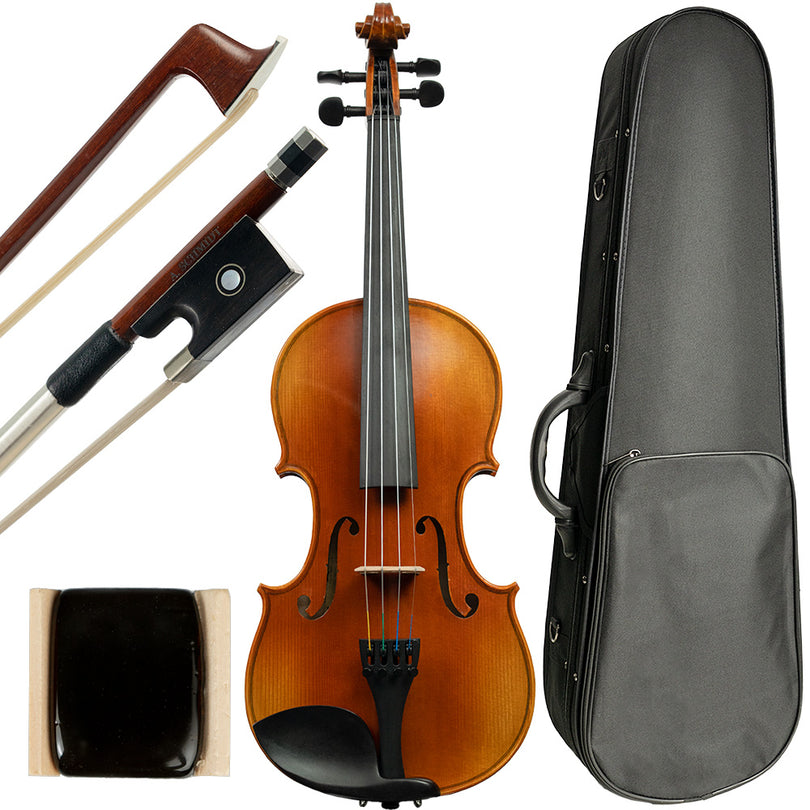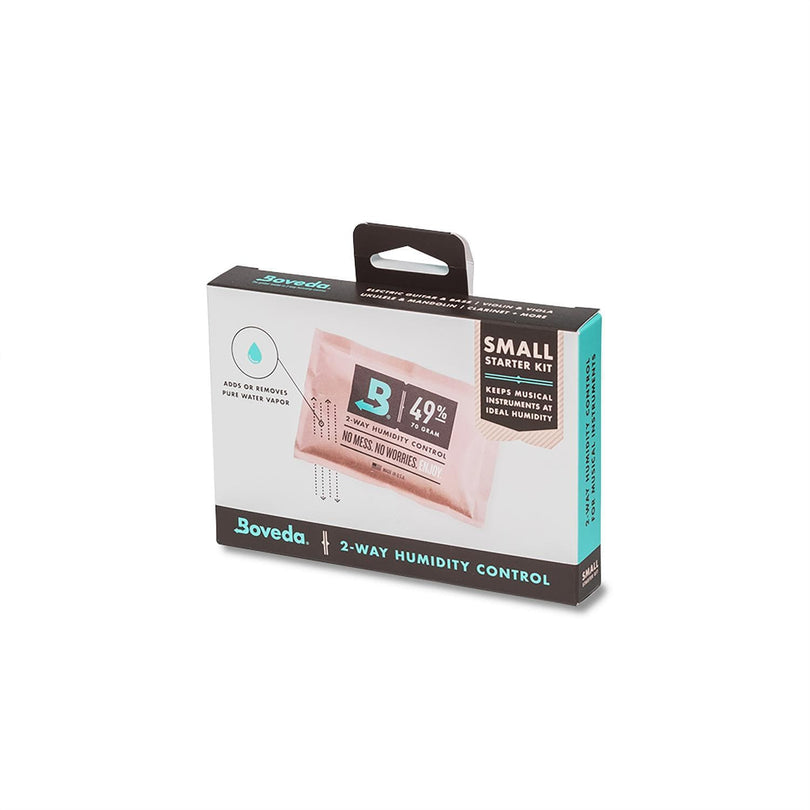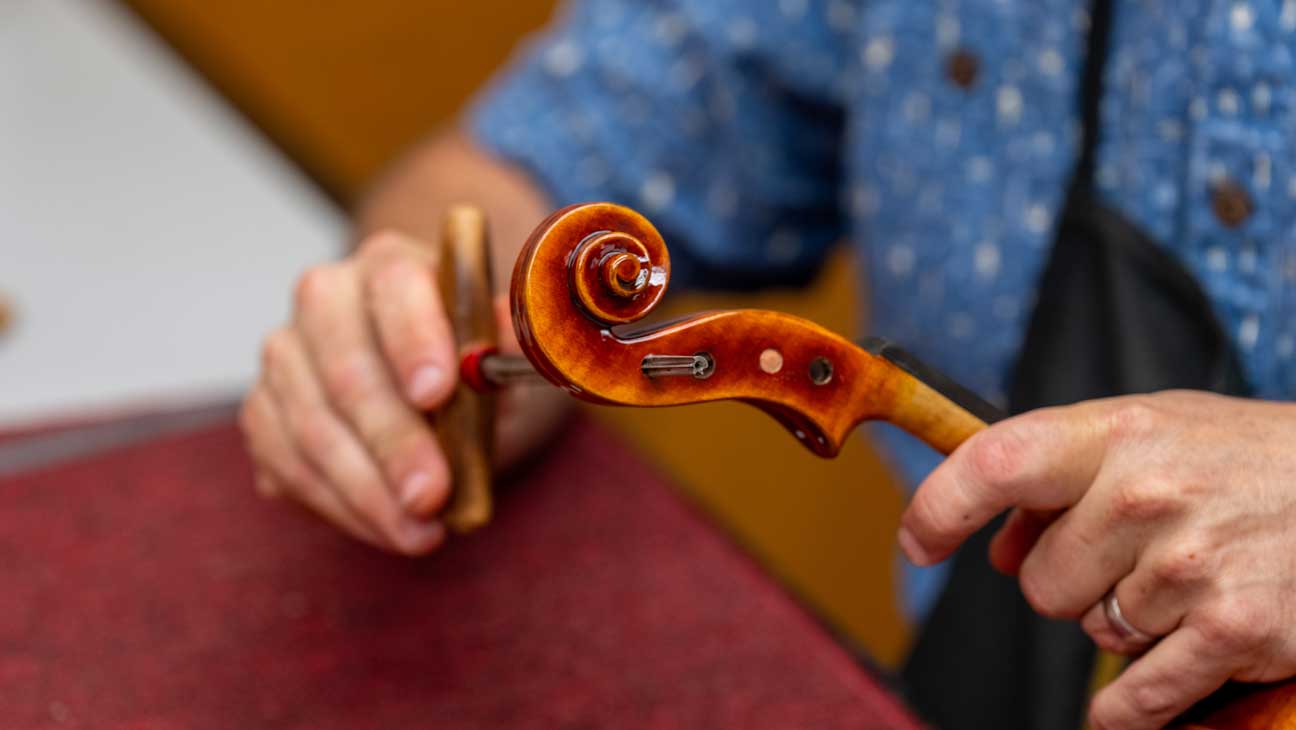Whether you're a brand-new student or a seasoned performer, one thing remains true: your strings are the heart of your sound. And just like any well-loved instrument part, they need attention and care to stay in peak shape.
At Shar Music, we often hear questions like:
-
"How long should strings last?"
-
"Why do my strings sound dull all of a sudden?"
-
"How can I make my strings last longer?"
You’re in the right place. In this guide, we’ll answer those questions and share some string-saving tips every string player should know—violinists, violists, cellists, and bassists alike.
Why String Care Matters
Strings wear out over time—not just from tuning and playing, but from exposure to rosin buildup, oils from your fingers, temperature changes, and humidity shifts. Neglecting string care doesn’t just lead to a dull sound—it can also affect playability and even damage your instrument’s bridge or pegs.
Proper maintenance can:
-
Extend string lifespan
-
Keep your tone bright and clean
-
Improve tuning stability
-
Help prevent costly repairs
How Often Should You Change Strings?
There’s no one-size-fits-all answer, but here’s a general guideline based on playing habits:
| Playing Frequency | String Lifespan |
|---|---|
| Daily (1+ hr/day) | Every 3–6 months |
| A few times per week | Every 6–9 months |
| Occasional playing | Once a year |
🎵 Pro Tip: Professionals and advanced students often change strings more frequently to maintain optimal tone and response—especially before performances or recordings.
Signs It’s Time to Replace Your Strings
Your strings may look fine… but your ears and fingers might tell a different story. Look (and listen) for these signs:
-
Dull or muted sound
-
Difficulty tuning or staying in tune
-
Fraying or unraveling at the nut or bridge
-
"False" tone (notes sound off despite correct tuning)
-
Fatigue or strain in your hands (you’re working harder to get the sound you want)
🎻 Strings that have gone “false” produce inconsistent pitch. If it feels like you’re fighting your instrument, your strings might be the culprit.
How to Clean and Care for Your Strings
1. Wipe Down After Every Practice
Use a soft, lint-free cloth (Shar sells a variety!) to gently remove rosin and sweat. Focus on the area between the fingerboard and bridge. This helps maintain tone quality and prevents grime buildup.
2. Check String Alignment
Keep an eye on how your strings sit on the bridge and nut. The bridge should be sitting exactly 90 degrees from bout to bout. Uneven pressure can twist and warp the bridge.
3. Monitor String Height and Tension
Over time, tuning and playing can cause the bridge to tilt forward. Make sure it’s standing straight (perpendicular to the instrument’s top) with both feet flush. Ask a teacher or luthier to help if you’re unsure.
4. Strings Sit on the Bridge
Strings should sit on the bridge grooves not in them. 50% in the groove, 50% showing outside of the groove
5. Lead Pencils Reduce Friction
Use a lead pencil to lubricate the grooves in the bridge allowing strings to glide without much friction.
6. Grooves Slide Smooth
Be sure that the grooves in the ebony nut allow strings to glide through smoothly.
7. Don’t Over-Rosin
Don’t Over-Rosin your bow. Excess rosin dust can distort the sound and gum up the strings. A light, even application is enough.
Bonus Tips for Maximum String Longevity
-
Wash your hands before playing to reduce oil transfer.
-
Avoid playing with sharp fingernails—they can nick the winding.
-
Store your instrument in stable conditions (40–60% humidity is ideal).
-
Use fine tuners gently—cranking too hard can strain the string.
Which Strings Last the Longest?
String longevity also depends on material and brand. Here’s a quick comparison:
| String Type | Longevity | Sound Quality |
|---|---|---|
| Steel Core | Long-lasting | Bright, focused |
| Synthetic Core | Moderate | Warm, rich |
| Gut Core | Shorter lifespan | Warm, complex |
We carry all major strings from Thomastik, Pirastro, Larsen, and D’Addario—each offering different brands and types for your own style, level, and budget.
Need help choosing the right set? Our team is happy to make personalized recommendations.
When in Doubt, Talk to a Pro
If your sound isn’t what it used to be, and you’ve tried cleaning and tuning, don’t guess—consult your teacher or visit a luthier. A quick checkup can save you from a frustrating practice session or a worn-out performance.
Final Thoughts
Strings don’t last forever—but with a little care, they’ll give you their best for as long as possible. Routine maintenance is one of the easiest ways to improve your sound, protect your instrument, and build healthy playing habits.
Ready for New Strings?
Explore our full selection of violin, viola, cello, and bass strings and find the perfect match for your instrument and playing style.
Stay Tuned!
Want more string care tips, practice advice, and product reviews? Subscribe to our newsletter and never miss a beat from the Shar Music community.









